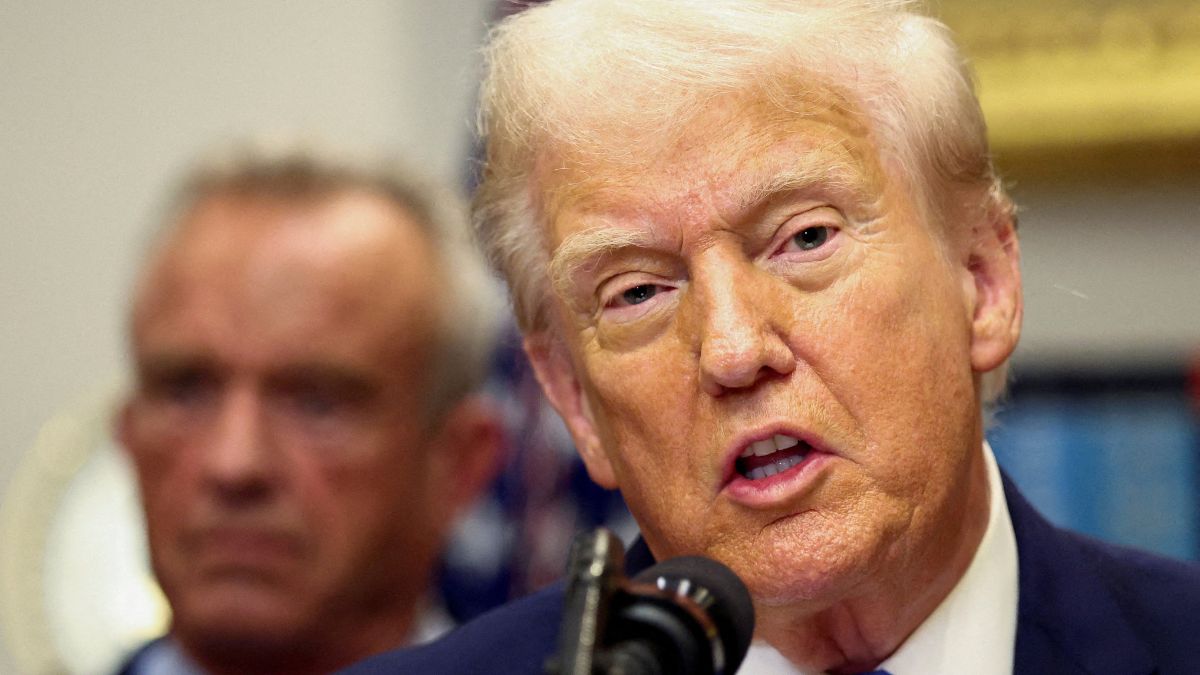Former Reserve Bank of India (RBI) Governor Raghuram Rajan told Congress leader Rahul Gandhi two years ago, sitting collegially beside him on a bench, that India’s economy would in future grow at barely 5 per cent a year.
When India’s economy actually grew at 7.8 per cent in the April-June 2025 quarter, despite trade disruptions and global conflicts, Rajan lapsed into silence.
A cabal of US-based Indian academics is quick to discredit India’s economic growth and social inclusiveness while giving the county they earn their livelihood from — the United States — a free pass on both.
Academics like Rajan, Arvind Subramanian and Kaushik Basu are honorary members of this cabal. Significantly, all three held key positions in the Indian government’s labyrinthic financial bureaucracy.
The unprecedented disruption US President Donald Trump has inflicted on global trade gets convoluted justification. Consider what Rajan told a friendly anchor known for his visceral bias against India.
Rajan defended Trump’s 50 per cent tariff on Indian exports: “I think certainly he believes that a current account deficit and trade account deficit is evidence that other countries are taking advantage of the United States rather than sending goods cheaply to the United States, which the US consumer benefits from. Therefore, it’s a cheap way of getting revenues, which can then help offset some of the tax cuts that he has made.
“It can be a way for the US to essentially use force when it doesn’t want to use its military.
“The fact that the Indian tariffs have been set at 25, the base tariffs, even while other countries are much lower in Asia, makes India disadvantaged. I think we are beyond issues of fairness, sovereignty, etc. We are talking about a situation where it is a power play.”
Impact Shorts
More ShortsTrump has over eight months of his second term as president damaged America’s global reputation, ruined its economy, spiked inflation and increased joblessness.
During his United Nations General Assembly (UNGA) address this week in New York, Trump claimed that he had ushered in a golden age for the United States.
The empirical evidence counters every claim he made to an incredulous audience of world leaders, grown weary of Trump’s braggadocio.
American business leaders are mortified at the long-term damage Trump is doing to the US economy and social fabric. JP Morgan Chase CEO Jamie Dimon said ruefully: “In 2050, we will say the West is lost.”
US-based Indian academics are muted in their criticism of Trump’s recent advice to pregnant women in the US that paracetamol can cause autism in children. The claim has been debunked by medical authorities worldwide. But Indian voices in the US, mortally afraid of losing their university tenures, remain silent.
Trump’s attack on free speech, forcing ABC to take Trump critic Jimmy Kimmel off-air till a compromise was arrived at, the unlawful detention of legal immigrants and the defunding of humanitarian aid organisations have caused widespread revulsion — but not among the Indian academic cabal. Had an Indian prime minister done a fraction of what Trump has, the call for a GenZ-led street revolution would have been made by the Opposition from the gates of Parliament.
There are already sinister warnings that what happened in Nepal, Sri Lanka and Bangladesh could happen in India.
It took Congress leader Manish Tewari to put a spoke in the wheel of that narrative when he posted on X: “The toppling of President Gotabaya Rajapaksa in Sri Lanka in July 2023, Sheikh Hasina in Bangladesh in July 2024, KP Sharma Oli in Nepal in September 2025 and now the protests against Ferdinand Marcos Jr in Philippines have one word written over them. ‘ENTITLEMENT IS NO LONGER ACCEPTABLE TO GEN X, Y, Z.’ Watch my piece on ‘The Social Media Trends that toppled or are challenging DYNASTS’.”
And yet, the Indian media – especially print and online – seizes on the Nepal and Bangladesh uprisings to warn of similar disturbances occurring in India. Manipur and Ladakh, where unrest led to arson this week over the demand for statehood, serve as warnings of what India could face.
Britain’s Reuters and America’s Bloomberg serve up a steady diet of reportage that focuses single-mindedly on India’s social divisions, not the dynamic growth of its startup ecosystem, surging spacetechs and growing financial inclusiveness.
Bloomberg’s Indian-origin columnists revel in drain-inspection reportage rather than balanced commentary. By doing so they mimic India’s US-based academics who constantly excavate examples of India’s assault on free speech while turning a blind eye to the ongoing assault on free speech, racial polarisation and university freedoms in Trump’s manic, dystopian America.
The writer is an editor, author and publisher. Views expressed in the above piece are personal and solely those of the author. They do not necessarily reflect Firstpost’s views.
)